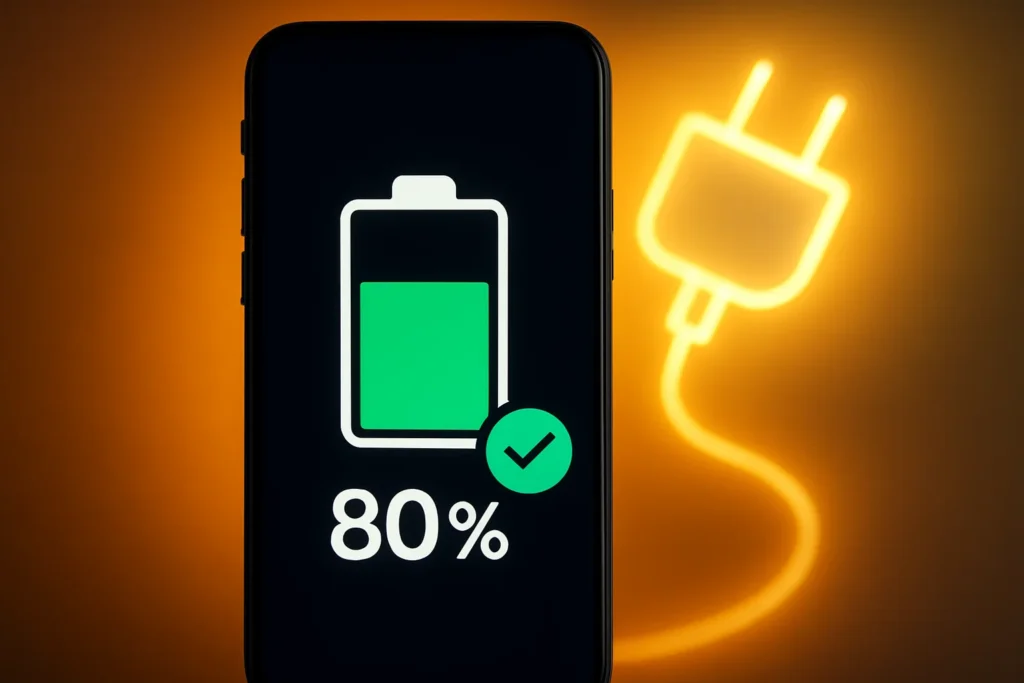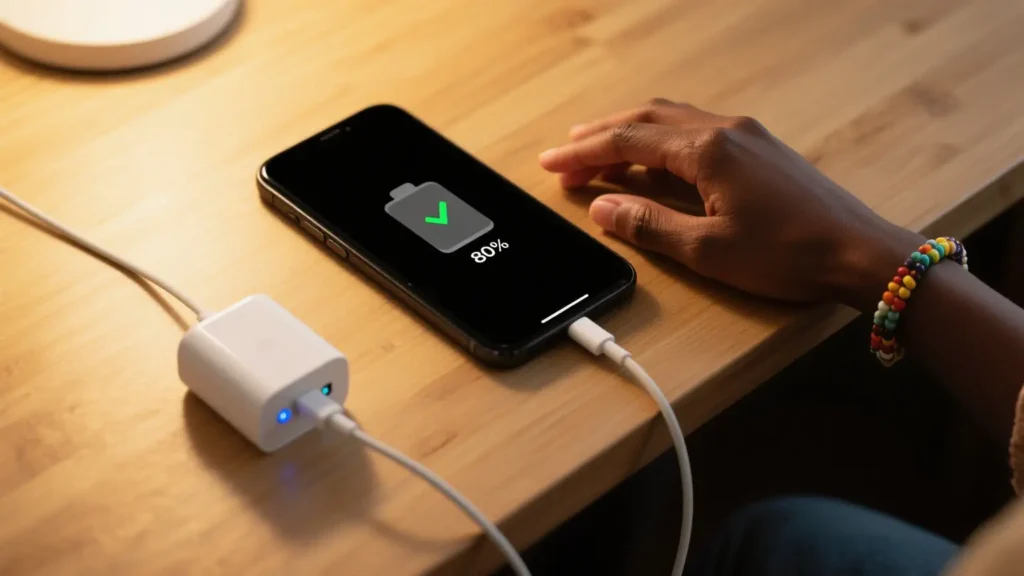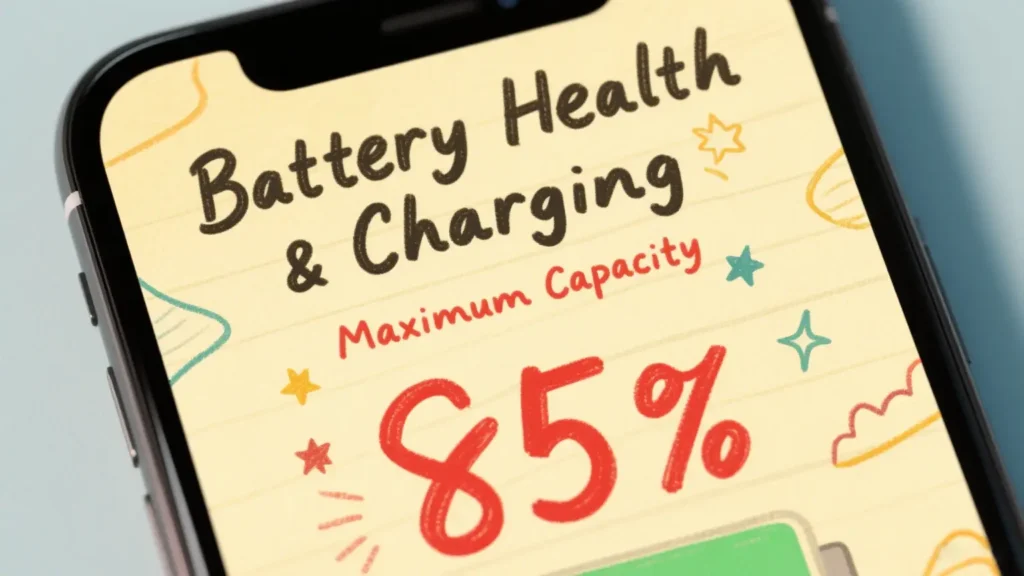The facts are that the world is becoming more and more mobile every day, and in parallel, mobile phones have become indispensable communication, work, entertainment, and navigation tools. In the last decade, the performance of our smartphones has been getting better, but battery life has remained the same or even decreased. The reason a phone battery no longer lasts long after a year or two is both an issue with the user’s charging habits and cell degeneration.
Many users hold the belief that it causes no harm to charge their smartphones overnight or intentionally bring the charge down to 0% before recharging them. Unfortunately, these wrong charging habits have a negative impact on the battery life of the smart device. So, what’s the greatest secret that will make the battery work even after many charge and discharge cycles? Keep the battery at a certain level all the time. Now, we will present the knowledge behind lithium-ion batteries, discuss the healthiest charge level, and provide a few strategies that will help you in the period of your device’s usability.

Deep Dive into Smartphone Batteries: The Essentials
Here’s a little background that helps you understand the thoughts on battery maintenance of your smartphone using the correct battery level.
The Majority of Devices Come with a Lithium-Ion Battery
Most mobile phones of today (iPhone or Android) incorporate lithium-ion (Li-ion) batteries since these have proved to be efficient. Such batteries come with the features of high energy density, low weight, and good charge/discharge life, which makes them attractive to consumers. However, the bad news is that they gradually wear out, and this does not only mean that they hold less charge and discharge faster, but also the performance of these batteries is negative to the phone’s performance facing such the case.
Charging Cycles and Battery Wear
A battery cycle number is chalked up once you use (and recharge) 100% of your battery’s capacity, without necessarily doing it all at one time. For example, going from 100% to 50% one day and 50% to 0% the following day = 1 cycle. Lithium-ion batteries, in general, have a lifespan of 400-500 full cycles before they start to lose a notable amount of charge.
This does not automatically mean that your battery will fail right away but you will certainly experience its degradation over time such as losing charge more quickly, taking longer to charge and your phone might lag or even shut down unexpectedly. Yet, the most influential factor for the condition of a battery is not how often you charge it but rather the extent that the mains stress the battery during charging.
What Is the Best Battery Level for Your Phone?
Avoid 0% and 100% Extremes
The most common mistake is thinking that you have to deplete the battery first before charging it again. While this was true for older nickel-based batteries, modern lithium-ion batteries perform better if they are kept within the range of 20% to 80%.
- Charging to 100% causes stress by applying a high voltage load near full capacity.
- Letting it drop below 10% can trigger deep discharges, which are harder on battery chemistry.
Typically, the lifespan of cell phone batteries is best when kept at the level of 30% to 80%.
Quick Tip: Try to recharge when the battery has a capacity between 30% and 40%, and de-plug it before it reaches 100%.
Why 100% Isn’t Ideal (Even If It Feels Good)
Charging the battery to its full capacity might appear right, but when the battery reaches 100%, your phone still needs minimal power for being fully charged, and in this way, it keeps pulling out a little bit of the current to maintain its status–creating a so-called “mini-charging” cycle. This not only causes the battery to experience a continuous high voltage load and temperature rise but it also leads to faster wear.
What About Wireless Charging?
Even though it is convenient, wireless charging sometimes generates more heat which can be a problem especially if your charger is not optimized or you have a thick case. The heat is one of the primary dangers for the battery.
If you love wireless charging, better use certified chargers and take off the heat-trapping covers.
Best Practices for Charging to Extend Battery Life
1. Use Battery Optimization Features
Smart features that come with current cell phones enable the battery to be charged in a more efficient way. One example is:
- iPhones: “Optimized Battery Charging” (recognizes your habits and charges only when necessary until 100%)
- Samsung Galaxy phones: “Protect Battery” mode (80-85% charge)
- Google Pixel: Adaptive Charging (controlled by the alarms and use frequency)
These options keep the phone battery in proper condition using a smart approach.

2. Avoid Charging Overnight (Unless Using Smart Features)
Annoyingly, leaving your device charging while you sleep won’t eliminate your battery immediately. Nevertheless, if you always keep on charging it, the battery lifespan will be reduced noticeably, especially in the situation that the phone temperature rises because of the charger. The more preferable options are smart plugs, battery optimization features or simply pulling the plug out before bedtime whenever possible.
3. Don’t Use While Charging (Especially Games or Video Apps)
Using high-powered apps while your phone is charging simultaneously can make extra heat. This thermal load together with the electrical load is a big factor in your battery’s damage. You should refrain from using it while it gets charged.
4. Be Careful with Heat Exposure
Don’t let direct sunlight, a hot car dashboard, or the space under your pillow be the places where you leave your phone to charge. High temperature drastically reduces battery lifespan. If the phone is warm to the touch while charging, stop it immediately by unplugging it.
5. The Correct Charger Is the Key
Make sure to always use original, certified charging cables and charging brick. Fake products might give you both low and high voltages and overcharge the device. Quick charging is absolutely secure when controlled from your phone’s internal regulator. However, do not use it continuously if fast charging is not a pressing matter.
Signs of Battery Wear (And What to Do)
Even if you take care of your battery and follow the tips mentioned above, your battery will still lose its power eventually. Here are the most common signs that will tell if your device needs to be checked:
- Your phone quickly loses its charge from 40% to 15%.
- You encounter unplanned shutdowns or the programs you use crash.
- Battery health goes down below 80% (on iPhones: Settings > Battery > Battery Health & Charging).
- Even with light use, the phone becomes warm.
Solution: In this case, if your device has already gone beyond the warranty period and still experiences these diseases, a battery replacement is a better solution than getting a new smartphone as it is more affordable and also a green option.
Common Battery Myths — Debunked
“I should always drain to 0%.”
lithium-ion batteries are damaged when you do this, so it is a mistake. A moderate charge, however, has a better effect on the cells.
“Charging to 100% is best.”
This is incorrect. If you keep your battery below 80% most of the time, you will be able to extend its life.
“Fast charging will kill my battery.”
Not exactly. Like everything else, pay attention to your device, and it won’t harm the battery.
Maybe at times, you can use quick charge but it is undeniable that will produce heat. Use as sparingly as you can.
“Shutting down apps equates to good battery life.”
Not really. It is true that turn-off can save some power temporarily, but it doesn’t play a part in the battery capacity preservation process.
Advanced Tips for Power Users
If you are really intense on keeping the battery in good health:
- Get any of the battery monitor applications, such as AccuBattery (Android) or CoconutBattery (Mac) and regularly check your health and cycle count of the device.
- Opt for 70-80% most times while charging, fully charge only once a month for battery statistics calibration (not for the battery itself).
- If you don’t plan to use your phone for a long time, store it with a half charge.
Why It Matters: Environmental and Financial Reasons
Each time a smartphone battery skips its lifespan it pushes the user to replace the phone and thus contributes to electronic waste. Worldwide, the majority of billions of smartphones are thrown away every year, and the major portion is mainly caused by battery issues, which are possible to avoid.
By just extending the life of your battery for one or two years, you can save a good amount of money and at the same time, sustainably reduce the demand for raw materials and lessen the carbon footprint of the earth.
Pro Tip: One of the not so noticeable, yet sustainable tech habits you can start is with small changes, which are usually the first steps—like the art of charging your phone.

Final Thoughts: Take Charge of Your Battery Health
Summarily, increasing to a device charging level of 20% to 80% is followed by a high likelihood of the phone’s health being preserved without any problem occurring even when there is no full charge and discharge cycle. Deciding to be smart while charging—such as keeping away from heat, not plugging at night, and using the built-in battery tools—will literally give the device a longer operating time.
Your phone will not only be of a better standard, but you’ll also save money, reduce e-waste, and be happy that you are using your tech in such a conscious way.